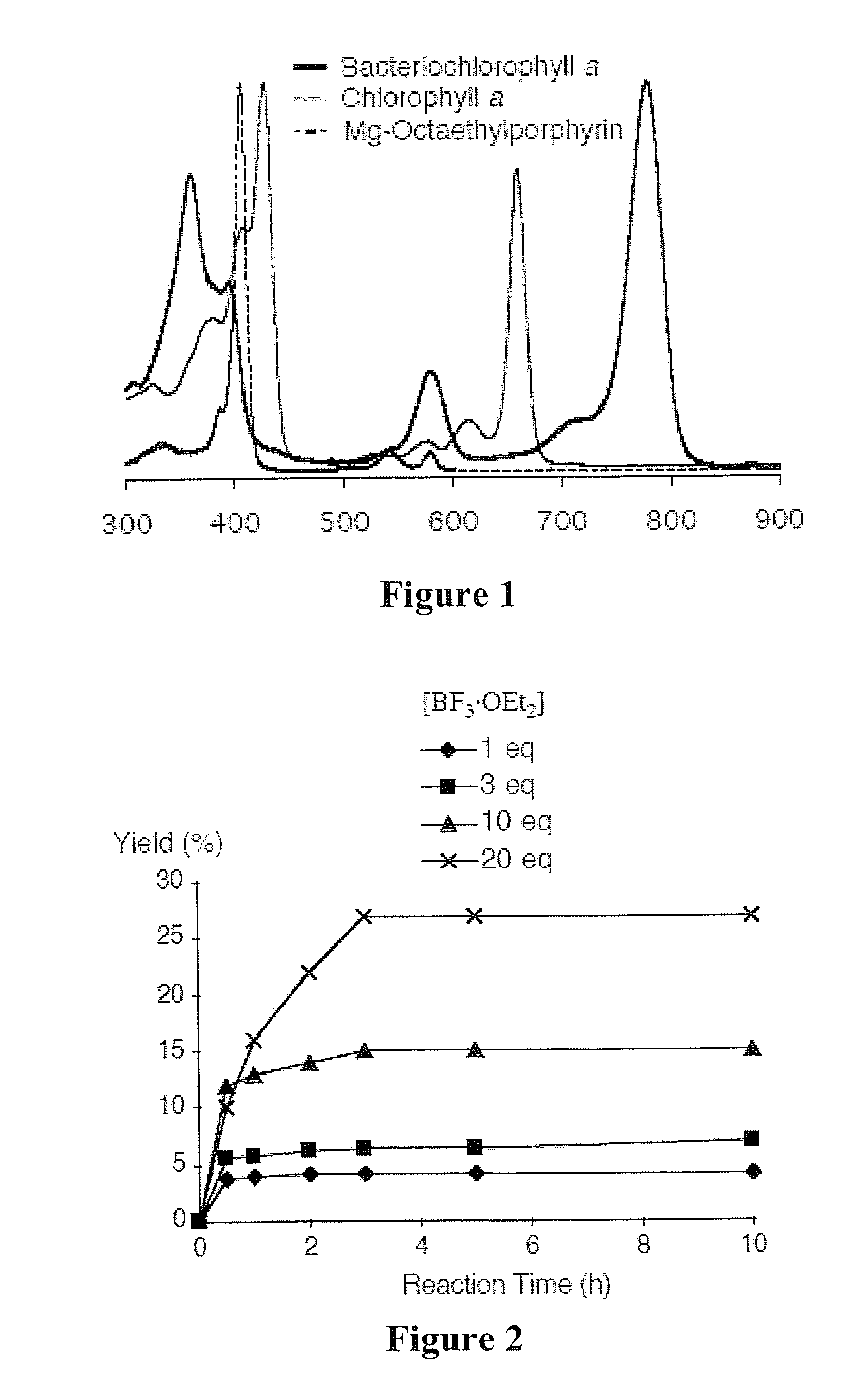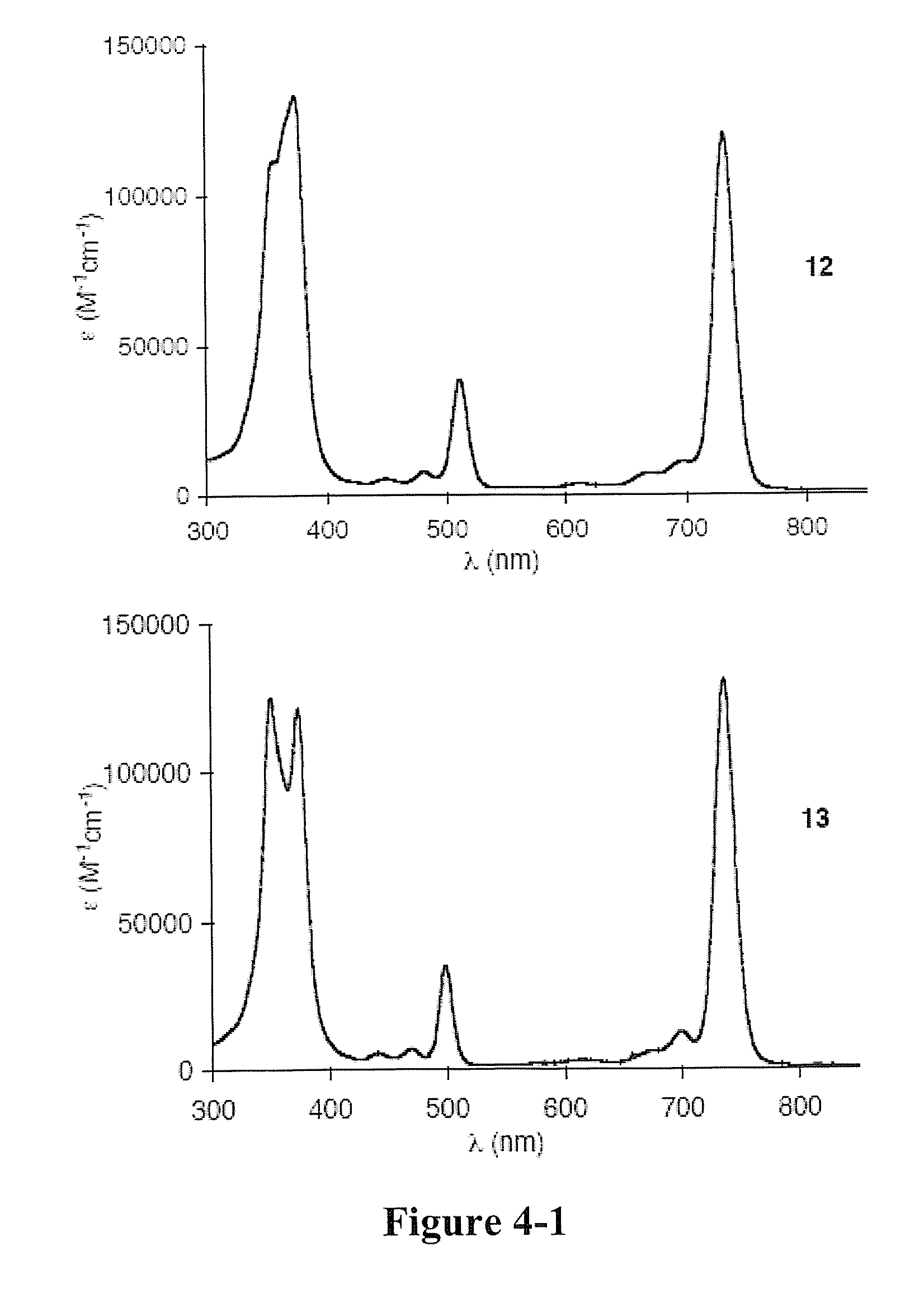De novo synthesis of bacteriochlorins
a technology of bacteriochlorin and synthesis, applied in the field of bacteriochlorins, can solve the problems of reducing the synthesized flexibility of bacterial ochlorin, reducing the synthesis efficiency of bacterial ochlorin, and pronounced dehydrogenation
- Summary
- Abstract
- Description
- Claims
- Application Information
AI Technical Summary
Benefits of technology
Problems solved by technology
Method used
Image
Examples
example 2
Bacteriochlorins Via a Dihydrodipyrrin-Carboxaldehyde
[0346]Recently and as described above, we developed a concise synthetic route to stable bacteriochlorins (Kim, H.-J.; Lindsey, J. S. J. Org. Chem. 2005, 70, 5475-5486). The synthesis employs the self-condensation of a dihydrodipyrrin-acetal. Here we describe a new synthetic route to bacteriochlorins. The new route involves oxidation of a dihydrodipyrrin to give the corresponding dihydrodipyrrin-aldehyde, which undergoes self-condensation to give free base bacteriochlorins (H-BC and an unidentified-BC) and a tetradehydrocorrin-aldehyde. The new route can be used as an alternative route for bacteriochlorin synthesis. Use of the aldehyde rather than the acetal affords a number of advantages.
Results and Discussion
[0347]1. Approach. In our previous work, we prepared a number of hydrodipyrrins and examined the reactivity of those hydrodipyrrins to find synthetic routes to stable bacteriochlorins. Three prototypical target hydrodipyrrin ...
PUM
 Login to View More
Login to View More Abstract
Description
Claims
Application Information
 Login to View More
Login to View More - R&D
- Intellectual Property
- Life Sciences
- Materials
- Tech Scout
- Unparalleled Data Quality
- Higher Quality Content
- 60% Fewer Hallucinations
Browse by: Latest US Patents, China's latest patents, Technical Efficacy Thesaurus, Application Domain, Technology Topic, Popular Technical Reports.
© 2025 PatSnap. All rights reserved.Legal|Privacy policy|Modern Slavery Act Transparency Statement|Sitemap|About US| Contact US: help@patsnap.com



